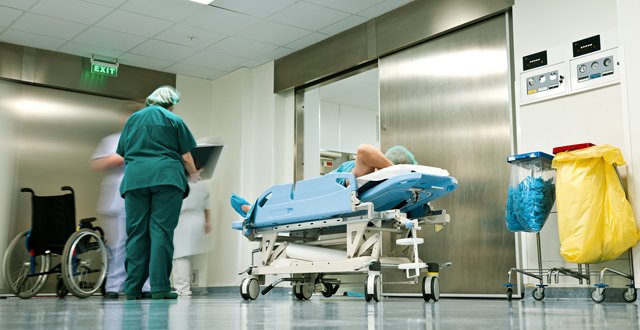
Greetings from Cardiff! Annie is back on her stage manager course but we haven’t found new accommodation yet, so I’m keeping her company for now.
As we left, the annual trolley crisis was peaking with the usual ‘blah blah’ response.
Hospitals need to be more efficient. (More beds would help efficiency.) It’s the consultants and private practice. (Surely that’s why the contract was changed.) Too much money is spent on health! (It’s not spent on hospital wards.) The 600 ‘bed-blockers’ are the cause of the 600 trolleys. (They’re separate problems. The trolley problem will need way more than 600 beds.) Let’s privatise! (And spend loads more money, like the US, without treating those in most need.)
Other solutions have been tried in recent years. Limerick has a new emergency department but is submerged under more trolleys than ever. Kilkenny got a magnificent assessment unit and was rewarded with record trolley numbers.
Now it’s all about GPs, primary care and community care, which would be great. General practice is the bedrock of our health service. It’s the bit that works, so let’s have more of it. But there’s no evidence that the trolleys will reduce.
A scary proposal to close services in Portlaoise will simply banjax the neighbouring hospitals, just as ‘reconfiguring’ Ennis and Nenagh caused endless trolleys in the mid-west.
Let’s recap: Not all patients on trolleys are counted. You are not a ‘trolley patient’ until you are assessed, investigated and accepted for admission by a ward specialist team.
Measures ‘to speed-up admissions’, as requested by the HSE recently, can only create more trolley patients. More emergency medicine (EM) consultants is not the answer either, as their role ends when a patient is admitted. What a mess.
(Here’s a suggestion to the INMO and the EM consultants: When a patient is accepted for admission and becomes a fully-fledged ‘trolley patient’, put a red ribbon or a gold star on the trolley to mark them as ward patients.)
If a lucky hospital has fewer trolley patients than the others — even if they only have one — it still means their wards are full.
Imagine a hotel in an extreme crisis, such as a storm or flood: If their rooms were full, they might put camp beds in the foyer. That’s what Irish hospitals are doing, all the time.
We used to model ourselves on the NHS. Since landing in Cardiff, I’ve realised it’s not such a good idea. The headline ‘Top hospital cuts cancer care due to lack of staff’ was about Oxford. A BBC report referred to “thousands of patients” in ambulances “waiting for A&E staff to take them in”, which sounds just like home.
Years ago, the FF/PD government decided we were closer to Boston than Berlin, and wanted to privatise chunks of healthcare, including co-located private hospitals. The US companies walked away when recession hit.
Now the Sláintecare report wants to move us back towards Europe — maybe towards Berlin. To copy Germany, we’ll have to add about 8,000 hospital beds.
Before Annie and I left, the new bed review was leaked and said more beds were needed. And Minister for Health Simon Harris plans to open beds. Hurray! Maybe that’s the end of the beds battle.
Except… how many beds?
The leaked report says possibly 9,000 beds, so that would be like Germany. But oh dear… it says we’d only need an extra 2,500 beds — by 2030 — if we invest in community care.
Hmm. I think we need 2,500 right now. I’m starting to get anxious again.
Ten years ago, the last report said we’d only need 8,834 acute hospital beds by 2020. The Department of Health and HSE have been cutting beds ever since. That number was derived, I believe, by asking staff to guess (yes, guess) what patients needed by looking at medical notes. No nursing notes? No medication or observation charts? No meetings with patients or families?
Furthermore, the magic 8,834 figure actually includes several thousand day beds; no-one seems to know that because no-one actually read the full report — except me.
I wonder where the new figures have come from.
Let’s consider what data the HSE gave those writing the latest report about ‘trolley patients’. Answer: Nil. They have no data to give. Hospitals are not allowed to HiPE-code patients unless they are on a real ward. The HSE has no data on my friends and family who were on trolleys with strokes, head injury and heart rhythm problems.
I don’t see how anyone can make decent predictions without that information. But it doesn’t stop everyone from rushing ahead with their explanations and solutions.
<em>Plus ça change, plus c’est la même chose</em>.
I wonder how many more times I’ll write this article…





Leave a Reply
You must be logged in to post a comment.